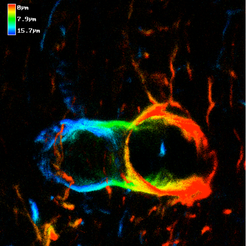Related references:
M. L. Schroeter, J. Steiner
Elevated serum levels of the glial marker protein S100B are not specific for schizophrenia or mood disorders. Molecular Psychiatry 14(2009): 235-237. IF 12.5
M. L. Schroeter, H. Abdul-Khaliq, M. Krebs, A. Diefenbacher, I. E. Blasig
NSE is unaltered whereas S100B is elevated in serum of patients with schizophrenia – Original research and meta-analysis.Psychiatry Research 167(2009): 66-72. IF 2.3
M. L. Schroeter, H. Abdul-Khaliq, M. Krebs, A. Diefenbacher, I. E. Blasig
Serum markers support disease-specific glial pathology in major depression. Journal of Affective Disorders 111(2008): 271-280. IF 3.1
M. L. Schroeter
Das antioxidative System der Blut-Hirn-Schranke - Einfluß von Astrozyten sowie Hypoxie/Reoxygenierung.(The antioxidative system of the blood-brain barrier – influences of astrocytes and hypoxia/reoxygenation) Shaker-Verlag, Aachen, Germany, 2005. ISBN 978-3-8322-4626-6.
M. L. Schroeter, H. Abdul-Khaliq, A. Diefenbacher, I. E. Blasig
Serum S100B is increased during early treatment with antipsychotics and in deficit schizophrenia. Schizophrenia Research 62(2003): 231-236. IF 3.9

